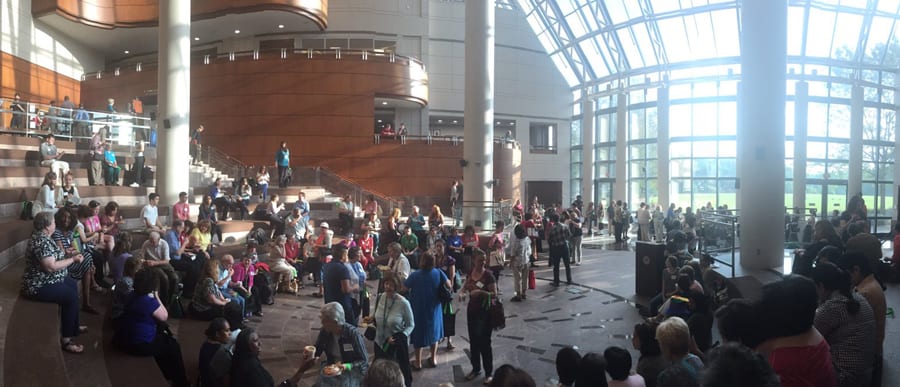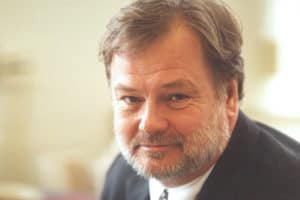
During the biannual staff day at Fairfax County (Va.) Public Library (FCPL), keynote speaker Miguel Figueroa, director of the American Library Association’s Center for the Future of Libraries, posed the following challenge to more than 400 staff members:
“Expand your vision. Drop, for a moment, the restraints on your thinking imposed by budgets and other resource caps. Think boldly. Coalesce around a strong idea; then work backwards and figure out the steps to get there. In the midst of rapidly shifting demographics and at a time when we cannot remain static, what active changes can you implement now that will make your library more relevant for the future?”
It’s a timely message for any library in the nation but doubly so for FCPL, with its new library director, Jessica Hudson, having taken the reins of one of the nation’s larger library systems that also happens to be located on the steps of the nation’s capital.
Change is a constant, but Figueroa listed examples of quickly evolving trends that have had a particular impact on libraries, such as short reading (content that can be read and/or delivered quickly), virtual reality, interactive toys, and emerging adulthood (individuals taking longer to move away from home, transition to career, get married, and have children).
Figueroa suggested that in many ways “creating a positive future of our library requires that we think less about ‘the user in the life of the library’ and more about ‘the library in the life of the user.’ How do we align our work so that it fits into the needs and directions that our communities are likely to encounter?”
To do this, he suggested putting together a team of six to 10 people across departments or branches. Engage the group in evaluating trends culled from trusted sources like magazines and newspapers, emerging sources like social media or scholarly research, and from their own lived experiences as members of the community. Meet regularly to discuss emerging trends and refine the group’s thinking—and talk with other staff members to test this information and incorporate new perspectives. Ask how the library can respond to this trend, capitalize on it, and leverage it to add value to the customer’s library experience. Make sure you have mixed talents on your team, including those who can dream productively, build partnerships, sell ideas to others, and can get projects launched. Having a team with diverse talents can transform an innovative idea into reality.
Hudson offered her perspectives on how to meet these challenges as she outlined areas of priority for FCPL to increase its relevance and value to the community for current and future patrons. She addressed four areas: technology, collections, youth services, and solid customer service.
At a time when all county agencies jockey for scarce funding, the library must be a good steward of its resources so it can provide the high-tech services that patrons can and should be able to expect, Hudson said. At the same time, the library needs to ensure the depth and breadth of its collections to be able to pivot to meet new demands while maintaining traditional resources. And youth services, a particular passion of hers, will require branches to think creatively about the many ways to serve the large and growing youth segment, one that the county survey indicated is a high priority with library users.
Hudson said as the county library embarks on a new strategic plan, they will all grapple with effectively integrating traditional and evolving service models. She believes in doing that, they can be a value-adding bridge to the community.
This is not unique to FCPL. Libraries nationwide are facing the challenge of balancing two different service models: a traditional model that focuses on core or foundational services, such as books, discovery by browsing the shelves, resources and materials for research, reference, study and individual fulfillment, quiet spaces for learning, and rooms for meeting; and the evolving service model that focuses on quick adaptation to changing community needs, experimentation, and partnering to achieve shared outcomes. It uses a demand-based, customer-centric approach, embraces changing technology, delivers services outside the building, provides multimedia resources, encourages discovery via the web and computer research, and seeks to support multiple learning styles. This requires an encompassing vision that can address changing needs and get stakeholders on the same page.
Hudson said the challenge will be to develop an integrated service model that serves both those seeking the library’s traditional core services as well as supporting innovative, changing, and experimental services.


